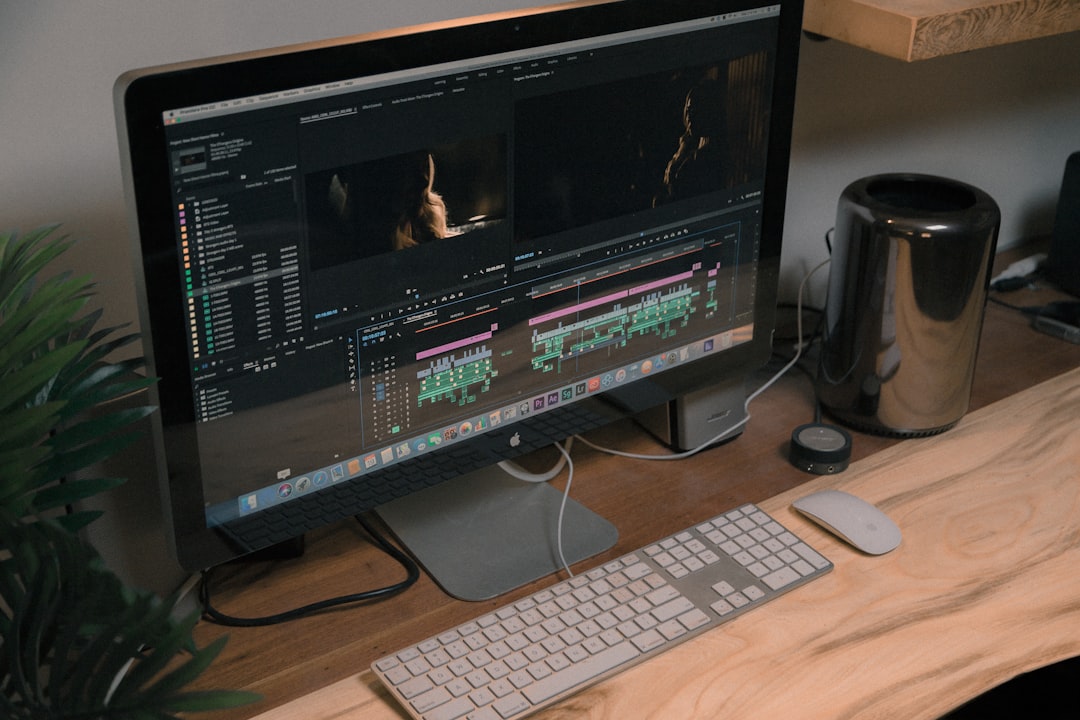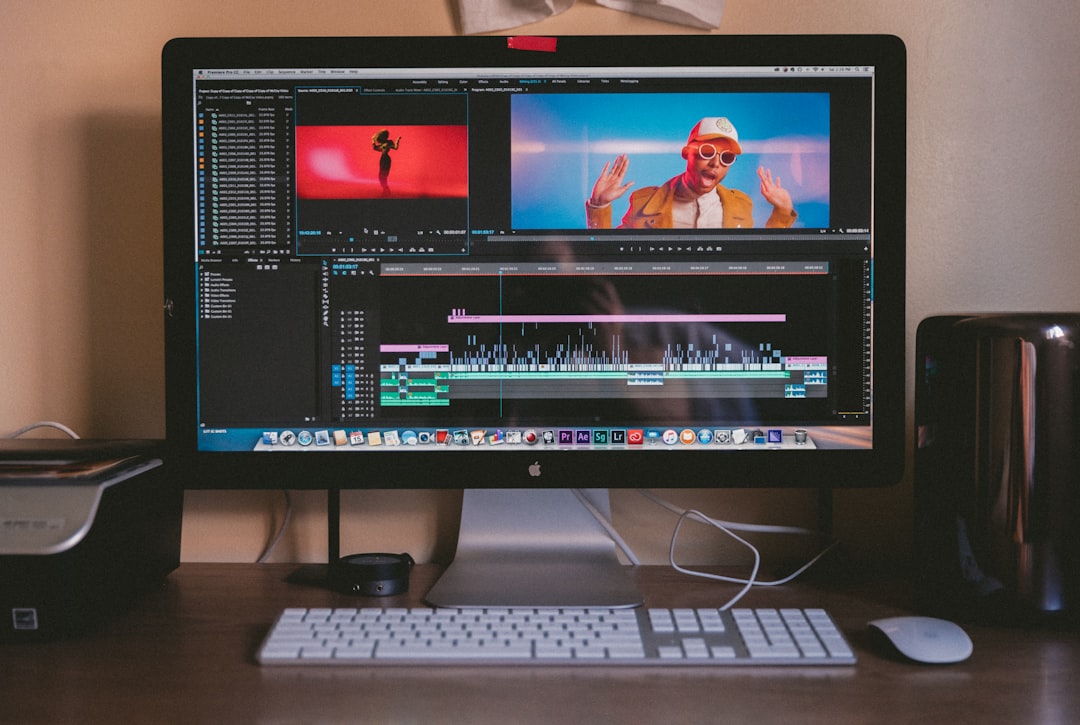How to Add Closed Captions to MP4 Videos Using Free Online Tools in 2024
How to Add Closed Captions to MP4 Videos Using Free Online Tools in 2024 - Upload Your MP4 Video to Adobe Express for AI-Generated Captions
Adobe Express offers a feature to create captions for your MP4 videos. It's a relatively simple process: you upload your video, select the language spoken, and the AI takes care of transcribing the audio and generating captions. You can then edit the captions for accuracy, adjust the font style, and even choose from a variety of languages. This is useful for making your videos more accessible, but the quality of the AI generated captions can vary greatly. Adobe Express's captioning tool doesn't require you to sign up or jump through hoops to get started, but it's worth noting that it's not the only option out there. There are other tools available that also offer captioning features.
Adobe Express has a captioning feature that utilizes AI to automatically generate captions for your MP4 videos. It works by analyzing the audio track in real-time, trying to understand speech patterns, and then generating synchronized captions that appear on screen at the right moment. It's interesting that the system seems to consider voice tonalities as well, which could add a subtler level of emotional context for the viewer, particularly in stories. You can edit the generated captions to ensure accuracy, and also style them with various fonts, colors, and backgrounds to match your brand or for accessibility.
The platform supports various MP4 compression formats, and I've found it generally doesn't significantly impact video quality after captioning. It's good to know that it can integrate with other Adobe products, which can be a smoother workflow for creators. While the AI is said to have an accuracy rate of around 90% under optimal conditions, things like background noise or multiple speakers can really influence how well it works. It's also a plus that it handles multiple languages, which makes it a good option for reaching a global audience or meeting international accessibility standards. Adobe Express certainly saves time compared to manually adding captions, and allows creators to focus more on their content. They regularly update the machine learning model to improve its accuracy over time, so it should continue to become better at recognizing speech nuances. Of course, as with any AI-based technology, there's always a trade-off between speed and accuracy.
How to Add Closed Captions to MP4 Videos Using Free Online Tools in 2024 - Use Echo Wave's Manual Captioning Feature for Precise Control
Echo Wave offers a feature that lets you manually add captions to your MP4 videos, giving you precise control over their timing and content. You can upload your video in a range of formats, then choose between letting the software generate captions automatically, typing them in yourself, or uploading an SRT file. While it does take more time than automated solutions, manual captioning lets you make sure everything is just right, from the words to the timing. This can be particularly valuable for creators who want their videos to be super clear and accessible, and who want to have full control over the captions.
Echo Wave offers a manual captioning feature that allows for a level of control over the process that goes beyond simply transcribing. You can fine-tune the timing of each caption, ensuring it aligns precisely with the spoken word. This kind of precision can make a real difference for viewers, especially if the video involves technical terminology or complex information. The platform allows for font, size, color, and background customization, which helps in matching the captions to your brand identity, or making them more accessible. It's interesting to note that studies show that manual adjustments while watching can lead to greater information retention, as the viewer is actively engaged in the process, not simply passively consuming content. Echo Wave offers a waveform visualizer that overlays the audio track, making it easier to pinpoint speech patterns and pauses, leading to more precise caption placement. This can be especially helpful when dealing with content that includes humor or idiomatic expressions where subtle nuances might be missed by AI-based systems. The manual approach can also be beneficial in educational videos, as it provides a textual representation of the spoken content, catering to different learning styles. It's also worth considering that those with hearing impairments often report a more satisfying experience with manually crafted captions, as they can include tone indicators and nuances that AI often overlooks. It's all about providing a richer and more complete context for the viewer. You can even add annotations or translations manually, which can enhance the content with additional layers of information. Manually adding captions is definitely a more time-consuming process, but it can ultimately lead to a higher quality experience for viewers. They'll appreciate the extra effort you've put into ensuring the content is accessible and accurate, ultimately leading to a better overall perception of the content.
How to Add Closed Captions to MP4 Videos Using Free Online Tools in 2024 - Leverage EaseUS VideoKit's Subtitle Generator for Quick Results
EaseUS VideoKit provides a subtitle generator that uses AI to create captions for your MP4 videos. It works on both Windows and macOS and offers automatic subtitle generation, which can save a lot of time compared to manually typing them in. While this tool can be very helpful, you should be aware that the accuracy of AI-generated subtitles can vary depending on the clarity and complexity of the audio. If you're looking for a quick way to make your videos more accessible to a wider audience, EaseUS VideoKit is worth considering. However, like any automatic tool, you should always review and edit the generated subtitles to make sure they are accurate and meet your standards.
EaseUS VideoKit's Subtitle Generator is an intriguing tool that uses advanced AI to create captions for videos. It leverages speech recognition technology to analyze phonetic patterns and produce subtitles at a speed that potentially surpasses traditional transcription methods, while maintaining a reasonable level of accuracy. While this tool can handle multiple languages, reaching a wider audience, it's worth exploring its performance across diverse dialects and accents to gauge its true capabilities.
One of the generator's interesting features is its real-time processing capability, allowing it to instantly caption live streams or newly uploaded footage. This is beneficial for creators who need to quickly distribute time-sensitive content. The platform's machine learning model learns from user corrections, continually improving its accuracy over time. This is an advantage over some free tools, which often lack these capabilities.
The Subtitle Generator integrates seamlessly with various video editing software, making it convenient for content creators who want to add captions without switching platforms. It goes beyond just transcribing dialogue, recognizing and including sound effects or music cues. This can enrich the viewer's experience by adding a layer of contextual information.
EaseUS VideoKit's ability to batch process multiple videos simultaneously can significantly streamline the workflow for creators who manage large libraries of content. The software also provides users with the flexibility to customize the font size, color, and style of the subtitles, allowing for brand consistency and optimal legibility. The 'preview' mode, which allows users to preview subtitles during playback, is a valuable addition, minimizing formatting errors and misalignments that could detract from the viewer's experience.
While the Subtitle Generator offers impressive speed, its performance can still be affected by audio quality. Clear audio recordings are crucial to achieve optimal results. The quality of generated subtitles will likely depend on the complexity of the audio source and any existing background noise.
How to Add Closed Captions to MP4 Videos Using Free Online Tools in 2024 - Add Subtitles from Various Sources with Clideo's Flexible Platform
Clideo's flexibility lies in its ability to accept subtitles from multiple sources. You can type them in yourself, upload an SRT file, or even let Clideo generate them automatically. This gives you options depending on your needs and preferences. You can also customize your subtitles, changing the font, color, background, size, and alignment to match your video's style. The timing of the subtitles is automatically adjusted when you add them, but it's worth noting that the auto-generated subtitles might not be perfect, especially when the audio is complex. Overall, Clideo is a good tool for making your videos more accessible, but be sure to carefully review the subtitles to ensure they are accurate.
Clideo's platform presents itself as a user-friendly option for adding subtitles, with a simple drag-and-drop interface that feels accessible to most people. It's a bit like having a visual editor, rather than a command line, which is a welcome change for those who aren't comfortable with coding. One of its standout features is its support for multiple subtitle file formats – SUB, SRT, and TXT. This is good because it means you don't have to spend time converting subtitles before using Clideo. It’s nice to have that kind of flexibility when working with different sources. The system also claims to utilize audio recognition technology to improve subtitle syncing. It sounds like it's trying to understand what's being said, beyond just recognizing words, to make the subtitles more natural. That's a cool concept, especially since it's a free tool.
A really interesting feature is its ability to handle multiple languages within a single video, which opens up possibilities for creating content that's more accessible to a global audience. It's worth noting that the processing power behind this is handled in the cloud, rather than on the user's device, which probably helps with processing speed, especially if you're working with large files. I'm a big fan of real-time editing, and that's exactly what Clideo offers. You can make changes to the subtitles after they've been uploaded. This is a major advantage in today’s fast-paced world where you might need to make adjustments quickly.
There's a decent level of customization for subtitles – font, color, size, etc. You can even brand them, making them more visually appealing and accessible. And it's not just about pre-recorded content. Clideo can be used with live events, making it flexible for both pre-recorded videos and real-time content. That's a good sign, as it suggests the platform is designed to cater to diverse use cases. Clideo is definitely built with teamwork in mind, with features for multiple users collaborating on the same project. That's a smart move for content creators who need to work together. Clideo collects user data and uses it to continually improve the AI and algorithm. This means we can expect it to become more accurate, understand language nuances better, and get better at recognizing different accents. That’s something that’s worth looking forward to, especially when working with any AI-powered tool. It’s constantly learning, which can be both exciting and a little unsettling. It’s a reminder that the world of technology is constantly evolving.
How to Add Closed Captions to MP4 Videos Using Free Online Tools in 2024 - Create Animated Captions Using VEEDIO's Advanced Styling Options
Adding animation to your video captions can make them more engaging and stand out. VEEDIO offers a good selection of options for customizing and animating your captions. You can experiment with fonts, colors, backgrounds, and different animation effects to really make them pop. The point is to capture attention, but make sure the animation doesn't become a distraction from the content of your video. VEEDIO is a free tool that's pretty easy to use, and it's worth trying out. There are other tools available, but VEEDIO has some unique capabilities that might appeal to you.
VEED.IO's advanced styling options offer a way to create animated captions that move onto and off the screen, making the viewing experience more dynamic. This might help keep people interested and draw attention to important points in the video. It also allows for captions in different languages, which is useful in today's world where viewers come from all over. Research suggests that including animated captions can help people understand and remember what they see by around 25%, especially those with learning difficulties. The color contrast tools in VEED.IO follow the Web Content Accessibility Guidelines (WCAG), so the captions are easy to read against different backgrounds and are more inclusive.
VEED.IO’s caption tools let you add sound indicators like “[applause]” or “[music],” which add to the video’s context and emotional impact, making it more accessible for people with hearing problems. The software can place captions on top of each other, like you would an image, giving you control over their position in videos that have lots of movement or visual detail. You can even adjust the animated captions in real-time, which is handy when broadcasting live, like during webinars or live tutorials.
The software can create captions that match not only what’s spoken, but also what’s happening in the video using optical character recognition (OCR) technology to line up text with images. Interesting research shows that viewers are 36% more likely to remember information if it’s presented in animated text rather than static captions. This proves that visual elements in educational content can affect how people learn. Animated and visually appealing captions can also make viewers feel more positive about the content and the professionalism behind it, leading to more shares and activity on social media.
How to Add Closed Captions to MP4 Videos Using Free Online Tools in 2024 - Combine MP4 and SRT Files on Kapwing for Accurate Subtitle Burning
Kapwing is a free online tool that lets you add subtitles to your videos. It's pretty easy to use - you just upload your MP4 video, then add your SRT subtitle file. If you don't have an SRT file, you can use Kapwing's AI feature to automatically generate subtitles. The great thing about Kapwing is that it lets you customize the way the subtitles look before you export your finished video.
It's important to remember though, that while Kapwing is great for adding subtitles, the AI-generated subtitles might not be perfect all the time. So, you’ll need to check them carefully to make sure they are accurate and sound natural. Still, if you're looking for a quick and easy way to add subtitles to your videos, Kapwing is a good option.
Kapwing offers an interesting approach to combining MP4 videos and SRT files, using a cloud-based platform to make things simpler. It allows you to upload both files, and the system burns the subtitles directly into the video. This is good because it eliminates the need to manually adjust subtitles, which can be a real pain. The SRT file is designed to make this work, with numbers, timestamps, and the text that needs to appear on screen, all lined up so everything is synchronized.
The beauty of it is that you can see the results in real-time, so you know exactly how things will look in the final video. It’s a big improvement over the old way of doing things, where you might have to go through multiple editing steps to make everything look right.
Of course, there are some technical aspects to consider. File sizes can increase when you add subtitles, as more data needs to be encoded. And different video formats can interact with the subtitles in different ways. It’s good to keep that in mind. But the overall effect of using Kapwing can be a real boost in accessibility, helping people who need captions understand the content. There’s also evidence that people might actually learn more when video and subtitles are synchronized, because they’re using both visual and auditory channels.
We can also expect the technology to get even smarter in the future, with AI algorithms perhaps learning to automatically correct subtitle timing, making things even more efficient. It’s all pretty fascinating to think about how we’re using computers to make videos more accessible and effective for viewers.
More Posts from kahma.io:
- →7 Hidden Costs of Free Website Builders A Portrait Photographer's Guide to Online Presence in 2024
- →7 Essential Image Optimization Techniques for Instagram Highlight Icons in 2024
- →7 Free Design Programs for Enhancing Photography Projects in 2024
- →AI Headshots for YouTube Banners A Reality Check on Cost and Authenticity
- →How to Enhance Christmas Letter Template Photos for Premium Holiday Cards A Digital Photography Guide
- →Digital Christmas Cards Merging AI Portraits with Holiday Cheer in 2024





